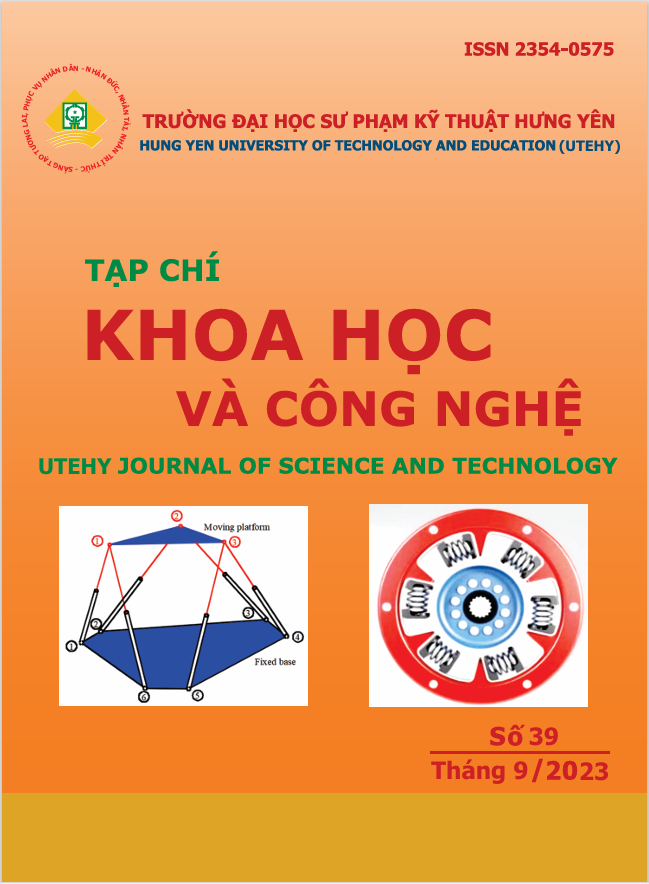RESEARCH ON THE OPTIMAL ALGORITHM OF THE USER COMBINED IN THE UPLINK WITH C-NOMA AND C-RSMA
Abstract
In this paper, we propose two scenarios: cooperative non-orthogonal multiple access (C-NOMA) and cooperative rate multiple access (C-RSMA) with associated users in the uplink. In these two scenarios, in the first slot each user transmits his own signal and receives the other user’s signal in full duplex mode and in the second slot each user forwards the other user’s messages. with amplifiers and forwarding protocols (AF). In both scenarios, to achieve better spectral efficiency, the user transmits the signal in non orthogonal mode in both slots. We then deduce the achievable ratios for C-NOMA and C-RSMA, and set up two optimization problems to maximize the minimum ratio of two users by considering the system ratio fair
number. Finally, the aforementioned performance is confirmed based on the simulation results.
References
H. Ji, S. Park, J. Yeo, Y. Kim, J. Lee, and B. Shim, “Ultra-reliable and low-latency communications in 5G downlink: Physical layer aspects”. IEEE Wireless Communications, Jun. 2018, vol. 25, no. 3, pp. 124-130.
W. Saad, M. Bennis, and M. Chen, “A vision of 6G wireless systems: Applications, trends, technologies, and open research problems”. IEEE Network, May 2020, vol. 34, no. 3, pp. 134-142.
A. Nosratinia, T. E. Hunter, and A. Hedayat, “Cooperative communication in wireless networks”. IEEE Communications Magazine, Oct. 2004, vol. 42, no. 10, pp. 74-80.
A. Sendonaris, E. Erkip, and B. Aazhang, “User cooperation diversity- Part I: System description”. IEEE Transactions on Communications, Nov. 2003, vol. 51, no. 11, pp. 1927-1938.
S. Bakim and O. Kaya, “Cooperative strategies and achievable rates for two user OFDMA channels”. IEEE Transactions on Wireless Communications, Dec. 2011, vol. 10, no. 12, pp. 4029-4034.
R. U. Nabar, H. Bolcskei, and F. W. Kneubuhler, “Fading relay channels: performance limits and space-time signal design”. IEEE Journal on Selected Areas in Communications, Aug. 2004, vol. 22, no. 6, pp. 1099-1109.
E. G. Larsson and B. R. Vojcic, “Cooperative transmit diversity based on superposition modulation”. IEEE Communications Letters, Sep. 2005, vol. 9, no. 9, pp. 778-780.
Lizhong Zheng and D. N. C. Tse, “Diversity and multiplexing: a fundamental tradeoff in multiple antenna channels”. IEEE Transactions on Information Theory, May 2003, vol. 49, no. 5, pp. 1073-1096.
Y. Saito, Y. Kishiyama, A. Benjebbour, T. Nakamura, A. Li, and K. Higuchi, “Non-orthogonal multiple access (NOMA) for cellular future radio access,” in 2013 IEEE 77th Vehicular Technology Conference (VTC Spring), Jun. 2013, pp. 1-5.
Z. Yang, Z. Ding, P. Fan, and N. Al-Dhahir, “A general power allocation scheme to guarantee quality of service in downlink and uplink NOMA systems”. IEEE Transactions on Wireless Communications, Nov. 2016, vol. 15, no. 11, pp. 7244-7257.
D. Tse and P. Viswanath, “Fundamentals of Wireless Communication,” Cambridge University Press, 2005.
Te Han and K. Kobayashi, “A new achievable rate region for the interference channel”. IEEE Transactions on Information Theory, Jan. 1981, vol. 27, no. 1, pp. 49-60.
B. Rimoldi and R. Urbanke, “A rate-splitting approach to the gaussian multiple-access channel”. IEEE Transactions on Information Theory, Mar. 1996, vol. 42, no. 2, pp. 364-375.
C. S. Patel, G. L. Stuber, and T. G. Pratt, “Statistical properties of amplify and forward relay fading channels”. IEEE Transactions on Vehicular Technology, Jan. 2006, vol. 55, no. 1, pp. 1-9.

